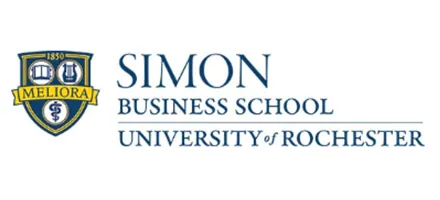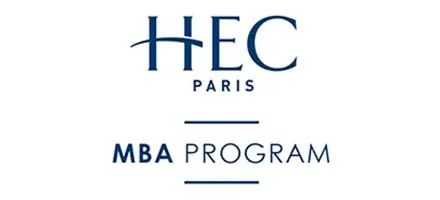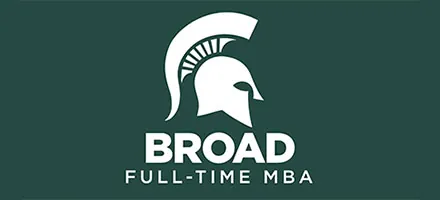
You can love it, or you can hate it. But every year, just as spring crops up on your calendar, you can expect the U.S. News MBA ranking to make an appearance in your email box.
Its importance to U.S. business schools cannot be overstated. A recent Poets&Quants survey completed by 75 business school deans, done in collaboration with the University of Miami’s Herbert School of Business, found that 74% of the deans believe that the U.S. News ranking is the most influential in shaping the perceptions of the quality of their schools and programs. It’s a shame that it is only focused on U.S. programs and not a truly global assessment.
Without fail, the list is chock full of surprises, shocks, and insights on the business of business education. Every year, we attempt to catalog the most important findings from the ranking, and this year is no exception. Our analysis goes well beyond the actual ranking itself and dives deep into the data behind the list, data that is often hidden from the public and rarely shared by schools in class profiles and employment reports.
Here’s our take on the 2025-2026 U.S. News MBA ranking:

Harvard Business School languishes in sixth place in the U.S. News ranking, exactly where it was a year ago. It is the lowest ranking HBS has ever received from U.S. News.
1) Why Does U.S. News Hate Harvard Business School?
Every year, Harvard Business School seemingly endures a new insult from U.S. News. In 2018, HBS was U.S. News’ perennial #1, usually vying for the top spot. Soon after, it was displaced by ‘Big 3’ stablemates Stanford GSB and the Wharton School. Soon enough, the school was looking up at the Chi-Town cousins, Kellogg and Booth. To add insult to injury, Harvard was eventually leapfrogged by down-river rival MIT Sloan.
This year? On the plus side, the “West Point of Capitalism” held onto the #6 spot. The bad news? It had to share the spot with NYU Stern and Dartmouth Tuck.
It could’ve been worse. After all, Columbia Business School and Yale SOM were also nipping at Harvard’s heels. Let’s face it: Being tied as the 2nd-best Ivy League graduate business school is a far better fate than being the 5th-best. Still, it appears that U.S. News’ brain trust isn’t particularly fond of Harvard Business School – or Harvard, in general. After all, Harvard Law tumbled from 4th to 6th in the 2025-2026 law school ranking. In U.S. News’ National University Ranking, Harvard has fallen behind Princeton and MIT after being the country’s #1 university in 2022-2023.
WHAT’S BEHIND THE RANKINGS SLUMP AT HARVARD BUSINESS SCHOOL
And the news isn’t getting better in 2025 in the wake of a brutal job market (10% placement drop over 2 years) and unflattering headlines (Thank you, Francesca Gino). So what’s behind Harvard Business School’s demise that has turned it into the proverbial “Sick Old Man” of higher education?
You can start with mean salary, which accounts for 20% of the U.S. News ranking weight. Here, HBS graduates raked in $193,505. Compare that to #2 Stanford GSB, which hit $206,955 – or #13 Duke Fuqua and #15 Cornell Johnson, whose respective $193,926 and $196,826 packages also bested HBS. In fact, HBS ranked 12th in mean salary, according to U.S. News data. Worse yet, Harvard pay is going in the wrong direction, as HSB grads were hauling in $198,180 just two years ago.
Alas, these numbers come with a caveat. When recruiters were surveyed by U.S. News about HBS grads, the school received a 4.6 on a 5-point scale – tying it with Wharton, Stanford GSB, Chicago Booth, Northwestern Kellog, and MIT Sloan for the highest average. And then there is the Salary by Profession, a metric introduced during the 2024-2025 cycle with a 10% weight. It compares a school’s collective average salary against peers across seven leading professions: Consulting, Finance and Accounting, General Management, Human Resources, Marketing and Sales, Information Technology, and Operations and Logistics. Here, HBS somehow ranks 2nd behind Stanford GSB (with Wharton rounding out the Top 3). That begs the question: Is there a gap that U.S. News is missing.
WHAT U.S. NEWS GETS WRONG ABOUT HARVARD
In other words, HBS performs well where it matters. Consulting? Harvard’s $184,073 base beats out Stanford ($180,250). Finance? Wharton’s $178,193 base falls short of HBS by over $4,000. And these are just starting bases! If U.S. News really wants to measure a Harvard MBA, maybe they could take a page out of The Financial Times and tack on pay after three years in the workforce. That seems like a more fair way to pinpoint an MBA degree’s impact.
That steers the conversation to Placement, clearly HBS’ Achilles Heel. Between Employment at Graduation (7%) and Placement Within Three Months of Graduation (13%), Placement accounts for a fifth of the U.S. News weight. And that’s a major problem for HBS. Among To 10 MBA programs, Harvard Business School’s 61.3% Graduation Placement is only ahead of Stanford (59.3%). At the three-month mark, the school’s 78.4% Placement rank is lower than all other Top 10 schools. However, these numbers disregard a key factor: the confidence that comes with prestige. Harvard MBA graduates can afford to sit tight and wait for the right opportunity. The Harvard Business School degree – regardless of U.S. News’ ranking – carries a cache that’s almost unmatched in any field. With 90,000+ alumni stretched across every imaginable industry and organization in 173 countries, HBS grads know it is just a matter of time before they find the right fit.
Even more, Harvard MBA grads aren’t following the same pruned paths as their peers. Notably, there is a pronounced preference for industries where firms engage in hiring small numbers, such as private equity and venture capital. These industries accounted for a quarter of hiring in the HBS Class of 2024. On top of that, another 14% of the class decided to start their own businesses, a high-risk, high-reward undertaking that doesn’t exactly pay like investment banking starting out. Those entrepreneurship numbers aren’t included in the data collected by U.S. News. Even more, just 508 out of 1,010 students reported their employment data – barely half of the available sample!
Beyond Pay and Placement – numbers with dubious undercurrents – Harvard Business School scores well. Among business school deans and MBA directors surveyed by U.S. News, HBS scored a 4.7 out of 5.0 – tying it with the Wharton School and Stanford GSB for top honors in a category carrying a 12.5% weight. In median GMAT, another 13% weight, HBS also joined several schools at the top with a 740. While Acceptance Rate is only worth 2% of the ranking, HBS managed a 11.2%, second only to Stanford GSB (6.8%).
In other words, Harvard Business School is punished by U.S. News for one factor – Placement – for factors rooted in just how distinguished the school is viewed in the marketplace. Considering the ranking inconsistency between Mean Salary and Salary by Profession, U.S. News clearly needs to tweak its methodology. Until that happens, HBS’s outlier status will continue to work against it in the U.S. News ranking.
2) The Table No Business School Wants You To See
As much as we and everyone else in business education obsesses over this annual ranking, the most valuable part of the list remains hidden from public view. That’s the underlying data which is used by U.S. News to actually crank out the list. Much of that information is behind a paywall on U.S. News site, and very little of it is shared by business schools in their class profiles and employment reports.
In fact, there is one data point that should be in any legitimate ranking of a business program: it’s a program’s yield rate, the percentage of admitted applicants who actually enroll at a school. This is the measure where candidates get to vote, rejecting offers from certain schools. Put simply, it’s the admit rate for the school. In that one number, you can find out how many admitted candidates rejected the school and how many accepted their offer of admission.
It is the ultimate wisdom of the crowd, and it may say more about a school’s reputation and image than any other stat. Sure, it can be manipulated to some degree. A school’s admission officials can entice candidates with scholarship money to sway a decision. Admissions also commonly rejects candidates who they believe will ultimately reject them. That is how yield rates are managed by admission officials.
YIELD: A STAT NOT IN ANY RANKING THAT MAY WELL BE MORE TELLING THAN ANY OTHER DATA POINT
But in the aggregate, it’s a meaningful stat and can justifiably be a valuable ranking in and of itself. No wonder, it is never shared on a business school’s website, even though it is on every admission official’s dashboard.
Which schools do candidates most embrace when accepted? Stanford is number one, managing to hold on to 85.1% of its admits last year. Harvard Business School is right behind the GSB with a success rate of 84.5%. Predictably, Wharton is third after a very wide gap from the two leaders, at 57.8%.
The data also shows which MBA programs are overvalued and undervalued by U.S. News‘ ranking. The most undervalued school that is clearly punching above its ranking weight? Duke University’s Fuqua School of Business. While U.S. News ranks Fuqua 14th, it is ten places higher on yield, in fourth place behind Stanford, Harvard, and Wharton. In fact, its yield of 57.4% is roughly equal to Wharton. You can partly attribute that amazing feat to Shari Hubert. who oversees recruitment and admissions, a long-time admissions super star who is virtually peerless.
ONLY SIX U.S. MBA PROGRAMS GET HALF OR MORE OF THEIR ADMITTED STUDENTS TO COME
Only six schools manage to close half or more of their admitted candidates: The other two are Columbia Business School (51.0%) and MIT Sloan (50.1%).
Overvalued by U.S. News‘ ranking? Northwestern University’s Kellogg School of Management. It’s second place finish this year, tied with Stanford by the way, is ten places higher than its yield rate rank of 12th.
We crunched the numbers reported to U.S. News for their Top 30 MBA programs. Here’s what it looks like:










